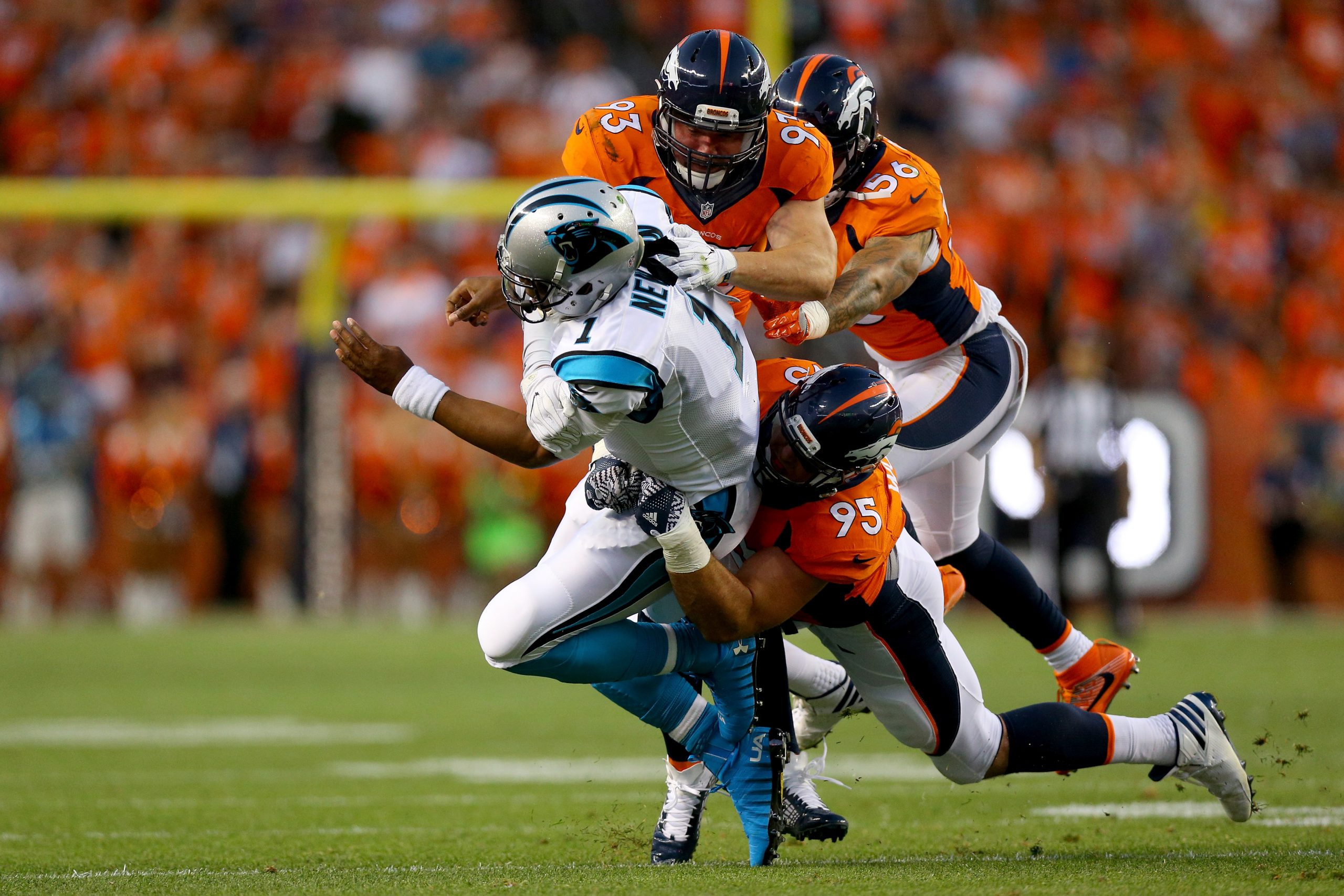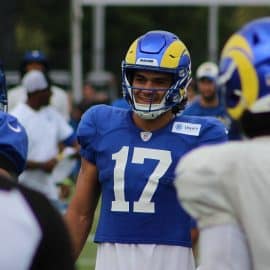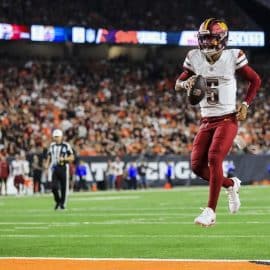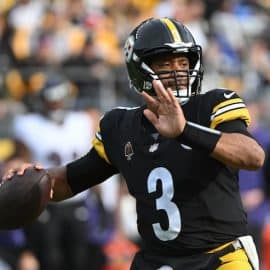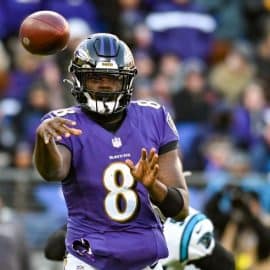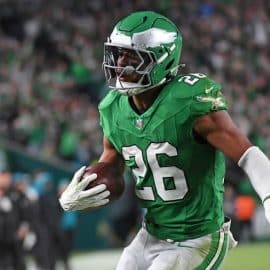When you’re a kid with an older brother, you tend to think he knows what he’s doing. He has the life experience, knowledge, and all the cool friends that have more money than you — even if that amount is via a minimum wage job at McDonald’s.
There are rare occasions where little brother may be on to something far in advance of big brother. The moments are few and far between, but when they happen, it can force big brother to reconsider certain things.
The NFL has been battling the issue of the rise in concussions in the sport for several years. Numbers have been increasing steadily. After 261 reported concussions in the 2012 season, a new concussion protocol led to a drop in concussions to 229 in 2013 and 206 in 2014. Last season, 271 concussions were reported, and of those 271, 92 were the result in contact with another helmet.
Contact with the surface of the ground (the cause of 29 concussions in 2015) is inevitable in a game such as football, where the idea of defense entails tackling the opponent to the ground. Other causes like contact with the shoulder aren’t nearly as prevalent as those where there’s helmet to helmet contact.
This off-season, the time has come for the NFL, the NFL Players Association, and the NFL’s Competition Committee to take a page from their little brother, the NCAA. The specific wrinkle I’m referring to would be the NCAA’s rules on targeting and helmet to helmet contact.
If you’re unfamiliar with the NCAA’s targeting rules, they’re pretty straightforward:
No player shall target and make forcible contact against an opponent with the crown (top) of his helmet. This foul requires that there is at least one indicator of targeting. When in question, it is a foul.
No player shall target and make forcible contact to the head or neck area of a defenseless opponent with the helmet, forearm, hand, fist, elbow or shoulder. This foul requires that there be at least one indicator of targeting. When in question, it is a foul (Rules 2-27-14 and 9-6). (A.R. 9-1-4-I-VI)
Note 1: “Targeting” means that a player takes aim at an opponent for purposes of attacking with forcible contact that goes beyond making a legal tackle or a legal block or playing the ball. Some indicators of targeting include, but are not limited to:
- Launch—a player leaving his feet to attack an opponent by an upward and forward thrust of the body to make forcible contact in the head or neck area.
- A crouch followed by an upward and forward thrust to attack with forcible contact at the head or neck area, even though one or both feet are still on the ground.
- Leading with helmet, shoulder, forearm, fist, hand or elbow to attack with forcible contact at the head or neck area.
- Lowering the head before attacking by initiating forcible contact with the crown of the helmet.
When referring to a “defenseless player”, these are the areas of note:
Note 2: Defenseless player (Rule 2-27-14):
- A player in the act of or just after throwing a pass.
- A receiver attempting to catch a forward pass or in position to receive a backward pass, or one who has completed a catch and has not had time to protect himself or has not clearly become a ball carrier.
- A kicker in the act of or just after kicking a ball, or during the kick or the return.
- A kick returner attempting to catch or recover a kick, or one who has completed a catch or recovery and has not had time to protect himself or has not clearly become a ball carrier.
- A player on the ground.
- A player obviously out of the play.
- A player who receives a blind-side block.
- A ball carrier already in the grasp of an opponent and whose forward progress has been stopped.
- A quarterback any time after a change of possession.
- A ball carrier who has obviously given himself up and is sliding feet-first.
That is a lot of information to break down, but the short of it is that you are flagged for leading with the crown of your helmet. Period. You’re also flagged if you hit a defenseless player under Note 2 stated above. In 2013, the NCAA went further. If you are penalized for either of those infractions, you are EJECTED. You are disqualified from the game. Hit the showers, son. Take the rest of the day off.
When the NFL has done so much to try to communicate to its players and fans that safety is a primary concern, you would think the league would take more cues from its “younger brother” when it comes to implementing sensible safety rules to at least reduce the number of concussions and serious injuries. These rules haven’t eliminated concussions in the NCAA, but these are worthwhile measures to at least contemplate as early as next season.
How do we think Carolina Panthers quarterback Cam Newton would feel if Darian Stewart was ejected from the Week 1 game against Denver after getting a concussion from this jarring and BLATANT targeting shot? That hit was one of THREE helmet to helmet hits Newton suffered (linebackers Brandon Marshall and Von Miller delivered the other two). Two of those three hits were penalized even though the NFL admitted that the hit Marshall dished out should’ve been penalized as well.
Darian Stewart’s hit cost just over $18,000, and he wasn’t suspended. It cost Cam Newton and the Panthers so much more. Newton suffered another concussion against the Atlanta Falcons a few weeks later after another pretty obvious helmet to helmet/targeting shot. The Panthers struggled to achieve a .500 record for the 2016-2017 season.
Newton was the reigning MVP of the league, and you would think that if there’s one player the NFL would want to protect from unnecessary blows to the head, it would be the gee-dee league MVP. I get it. Newton isn’t your average quarterback. He’s 6-foot-5 and 245 pounds, but size doesn’t matter. A helmet to helmet hit should be penalized equally whether the person getting hit is Cam Newton or Wes Welker — a 5-foot-9, 185 pound wide receiver who suffered three concussions in a span of ten months.
The fine for such a hit — whether it causes a concussion or not — is laughable. Darian Stewart was only fined $18,000. Deshazor Everett, a safety and special teams player for the Washington Professional Football Team, leveled Eagles running back Darren Sproles on this hit during a punt in the fourth quarter in a game in early December.
Before you read on, go back to the clip. Play it. While you’re doing so, close your eyes and just listen to the collision. If that sound of helmet to helmet contact doesn’t make you at least somewhat sick, then that’s okay, but it really should.
Sproles was immediately taken off the field and missed the rest of the game (rightfully so) due to a concussion. The Eagles eventually lost and Everett’s fine? $48,000, but he wasn’t suspended, either.
Had the Newton play or the Sproles play taken place under NCAA rule, both Stewart and Everett would’ve been tossed from the game and possibly suspended for the following week as well. This season, the NFL did approve a measure to eject a player who is flagged twice for unsportsmanlike conduct — the umbrella that these kinds of hits fall under. The time has probably come to go the next step with this rule and eject a player who is flagged for helmet to helmet hits or targeting.
Opponents of such a measure would immediately point to a player being wrongfully ejected. That’s where the NCAA got another one right versus its big brother. When a targeting penalty is called, the play is immediately reviewed to judge intent versus accidental. Add that wrinkle, too. The NFL can take time out of its busy schedule of penalizing players for stupider reasons like what a player is wearing or what they do with a football after a touchdown is scored. (Honestly, if the NFL did as much work with correcting serious problems like concussions versus the other silly stuff they waste time on, the NFL could be much safer.)
Part of the blame should also go to team doctors and the independent neurologists on the sidelines. Let’s go back to the Panthers/Broncos game from week one. After the blatant late hit from Stewart, you can see Newton writhing around not knowing where or who he is. Amazingly (and stupidly) enough, Newton STAYED in the game for the final 36 seconds. Head coach Ron Rivera should have removed Cam from that game — after punching the referee right in the face had he not thrown that flag.
Too many times, players either ignore the NFL’s concussion protocols — which were called into question immediately following that game (by Cam Newton’s father, Cecil, no less). Cecil Newton said this to ESPN the week after that game:
“It starts with the guys who control the behavior on the field. I think the culprit is the mere fact that they allowed the game to get out of control. They allowed players to push the envelope to the very edge. That’s my ultimate concern. Whether [league officials] want to go after them or not, fine. But I’m thinking about Cam Newton being healthy today, tomorrow and 25 or 35 years from now.”
That is a quote that is indicative of a father who is becoming more and more concerned for his son (who is just 27). He isn’t wrong.
I know. Cam Newton is a grown-ass man who made his choice to play this sport. Fine, I accept that level of personal responsibility from a football player. However, it’s becoming more and more evident that maybe the NFL doesn’t care about the safety of its players from an ORGANIZATIONAL stand point.
Little brother has it right.
Let’s see if big brother learns a few things.
Add The Sports Daily to your Google News Feed!
